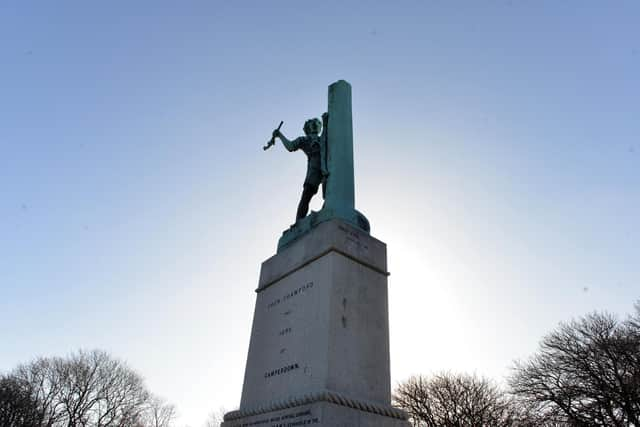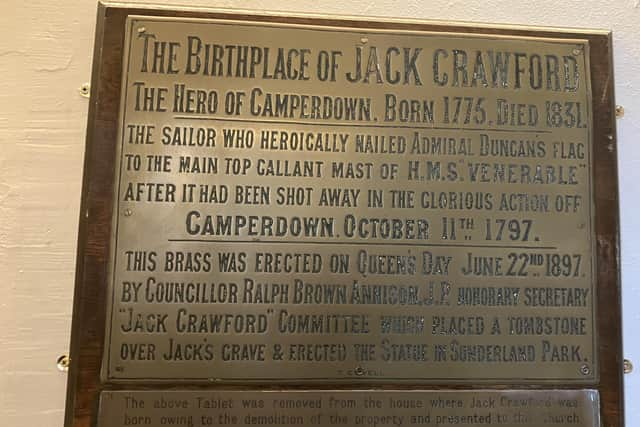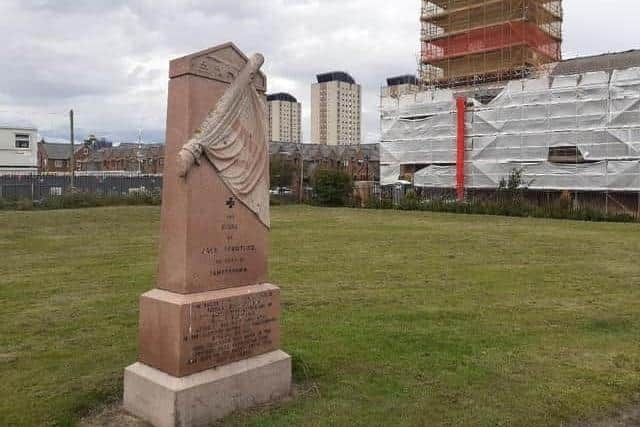The rise to fame, fall and grim death of Sunderland's swashbuckling Royal Navy war hero Jack Crawford
and live on Freeview channel 276
While I’ve cycled past Jack’s statue in Mowbray Park on many occasions, it was only while recently covering the story about the return of a Sea Cadets group to Sunderland for the first time in two decades that I became aware of his remarkable exploits.
Interviewing the cadet’s commanding officer James Simpson, he told me how the last group to operate in Sunderland went by name of TS Jack Crawford, in honour of the man who grew up in a slum district the city's East End and went on to become one of the Royal Navy’s greatest war heroes and to be immortalised by this now universally famous saying.
Advertisement
Hide AdAdvertisement
Hide AdJack was born in 1775 and worked as as a keelman on the River Wear before joining the Royal Navy to help in the King’s war effort against France and its allies, which at that time included Holland which was under French rule.
He served on HMS Venerable under Admiral Duncan and on October 11, 1797, the British navy engaged in a battle with the Dutch navy off the coast of the village of Camperduin.
As his ship came under heavy attack it was here where Jack’s gallant exploits began to unfold, the events of which have been researched and chronicled by Professor Angela Smith from the University of Sunderland.
Angela became interested in finding out more about Jack’s story after leading tours of the city for newly arriving students which included the statue in Mowbray Park.
Advertisement
Hide AdAdvertisement
Hide AdShe said: “During the battle, Admiral Duncan’s colours, or flag, was shot down from the masthead. The removal of the colours normally signalled defeat, so Jack climbed up the mast, despite being shot at by the Dutch forces, and nailed the colours back to the mast.


"After the victory, his brave actions became famous and Jack was celebrated as a hero.”
However, Angela revealed his actions may not have been entirely born out of bravery.
She added: “The reality is that it appears Jack was press ganged into joining the navy and forced at gunpoint by his commanding officer to go up the mast and so he didn’t really have much of a choice. It was either go up the mast and be shot at or be shot for refusing to do so.”


Advertisement
Hide AdAdvertisement
Hide AdWhatever the reason, HMS Venerable and Admiral Duncan prevailed, the Royal Navy returned victorious and Jack was hailed a war hero. He was presented to King George III and awarded with a government pension and medal with his exploits celebrated nationally in engravings and pamphlets.
His actions were celebrated in verse with a poem which included the lines which said: “Beat his heart with proud elation as he firmly fixed his stand,and again the colours floated as he held them in his hand. Then with pistol deftly wielded, mid the battle’s ceaseless blast, fastened there the colours firmly, as he nailed them to the mast.”
Angela said: “Jack’s poem became very famous and appeared in lots of school books. It became the first literary reference to nailing your colours to the mast, which became universally known.
"As word spread of his heroics, Jack’s humble birthplace in the slums of the East End of Sunderland became a place of local pilgrimage.”


Advertisement
Hide AdAdvertisement
Hide AdHowever, with the passing of time, Jack’s fame began to wane and he sadly fell on hard times.
Angela said: “When Jack left the navy and returned to Sunderland, like many sailors at the time he ended up developing a drink problem and living in poverty. His King’s pension was only a few shillings and he ended up selling his medal to help make ends meet.
"He became known for touring the pubs and retelling his mast climbing story in exchange for being bought a pint of beer. He died in 1831 at the age of 56 and was reported as the second recorded victim of the city’s cholera epidemic.”
He was buried alongside other victims in a cholera pit mass grave and, despite his heroic exploits three decades earlier, he had a pauper’s funeral with no gravestone or plaque to commemorate his passing.
Advertisement
Hide AdAdvertisement
Hide AdIt was 60 years later, at the end of the nineteenth century that Jack’s act of heroism began to get the recognition it deserved and led to his legend still continuing to grow over two centuries after the Battle of Camperdown.


Angela said: “The country was looking to celebrate its Victorian imperialism and self-proclaimed view as a superior nation. The Government and councils up and down the country, including Sunderland, began to look for past heroes and conquests to celebrate.
“In 1888, Sunderland City Council decided to celebrate Jack’s exploits and set-up the Jack Crawford Committee, led by Ralph Annison, which led to the erection of his statue in Mowbray Park and a commemorative plaque being placed on the house he was born in Pottery Bank.
"The committee also funded a memorial headstone for Jack in the grounds of Holy Trinity church, now known as Seventeen-Nineteen.”
Advertisement
Hide AdAdvertisement
Hide AdThe city continues to remember Jack, with the plaque now taking pride of place outside the vestry door in Seventeen-Nineteen and a mural of Jack climbing the mast which adorns the side of a building on Church Street East.
The Council also named one of its buildings Jack Crawford House, as well as the Jack Crawford pub which was on Whitburn Street from 1873 to 1943. His actions were also captured by Sunderland-born artist, Clarkson Stanfield (1793-1867) and his painting of the battle now hangs in The McManus Art Gallery in Dundee.
Jack’s greatest legacy though remains in that six word saying which is ingrained in the English language when we express our intentions and nail our colours to the mast.
Comment Guidelines
National World encourages reader discussion on our stories. User feedback, insights and back-and-forth exchanges add a rich layer of context to reporting. Please review our Community Guidelines before commenting.
